PPC Glossary – The Ultimate A-Z Guide to PPC Terminology
Last Updated on April 3, 2024 by Subhash Jain
65+ PPC Terms Every SEO Beginner should know
The PPC and SEM Glossary will help newbie online marketers, digital marketing agencies, experienced PPC experts, and the businesses looking for quick leads, to understand the PPC and SEM terms in true essence to make their PPC campaigns more delivering.
Under a PPC advertising campaign, you pay only for the clicks at the link of an ad to reach your website. Because, the results of a PPC campaign under search engine marketing (SEM) are instant, therefore, it has become an integral part of digital marketing strategy.
Do you know ROI for PPC may be up to 200%? Or, PPC advertising drives 50% more conversions than organic advertising? There are many stats to prove that PPC ads drive significant revenue benefits for paid marketing campaigns.
So, what is PPC (Pay Per Click) advertising? PPC is a paid marketing that places your paid ads above the organic results in search engine results pages (SERPs).
As one of the leading PPC agencies, we acquired practical and technical knowledge about how to set up a PPC campaign and run successfully to deliver results to the clients.
Sharing our knowledge, here, I abbreviate 65+important PPC and SEM terminologies in alphabetical order to help you bridge the knowledge gap and to use PPC and SEM up to the full potential within a reasonable budget.
Ad Campaign
It is the set of advertisements created to deliver the same message for the same marketing objectives. PPC Ad campaigns may have multiple groups of advertisements (Ad Groups) created for different keywords.
Ad Extensions
Google allows adding additional specific information about extra links, price, ratings, etc free of cost to advertising.
Ad Delivery
It is a functionality of Google Ads that allows you to set the period for ad display.
Ad Network
It is a group of websites that host your ads for a charge to increase the visibility of your PPC landing page.
AdSense
It is a contextual advertising support service. Google facilitates advertisers to run their ads on trusted content publishers’ websites for revenue generation.
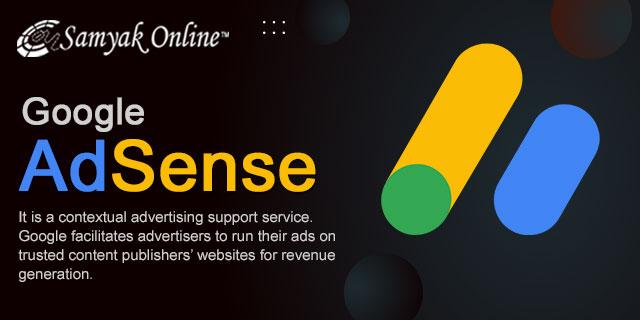
Assisted Conversion
It is a metric that denotes the number of interactions for sales and conversions contributed by a channel. If any channel appears on the conversion path, the conversion is counted as an assisted conversion.
Ad Rank
AD RANK = CPC BID x QUALITY SCORE
AD RANK: Achieving the Top position relies on the best combination of CPC Bid and Quality Score.
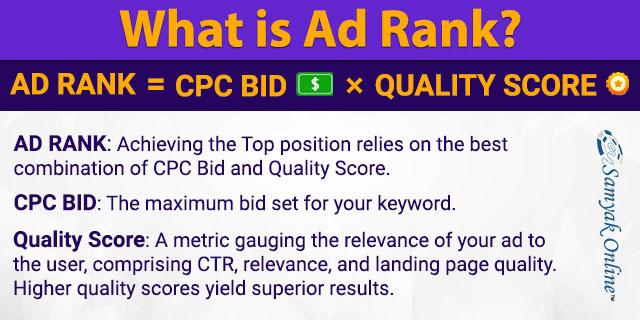
A/B Testing
It is a method of comparing two versions of a webpage to scale the performance.
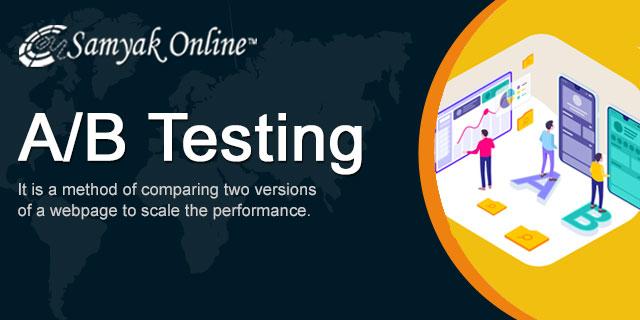
Bid
It is the maximum price you agree to pay for each click for the specified keywords.
Bid Management
It is the process to get the minimum bid for the target keywords by optimizing and grouping and optimizing the set of keywords.
Behavioral Targeting
It is a method of targeted search engine marketing planned and commenced based on the users’ behavior/activity.
Branded Keywords
These are the keywords empowered with a popular brand. For example, an online shoe store can use Nike, or Puma to add additional value to Google Ads.
Callout Extensions
It is a Google feature that allows advertisers to add text at the bottom of an ad’s text to promote sales offers like price matching, free shipping, or 24-hour support service.
Click-to-Call
It is a Google feature also known as a Call extension. It allows advertisers to add contact phone numbers below the PPC Ad text.
Click-Through Rate (CTR)
This metric denotes the ratio of the total number of clicks vs the total number of times when the ad was displayed. CTR tells about the effectiveness of the PPC campaign.
Cost-Per-Click (CPC)
Under this bidding model, advertisers pay for each click on their ad. CPC is an important metric to justify the cost of a PPC ad campaign.
Cost-Per-Impression (CPI)
It is the cost agreed by an advertiser to be paid for per thousand impressions (views).
Cost-Per-Acquisition (CPA)
This marketing metric denotes the cost of getting one paying customer through a campaign. It is important to track the CPA metric to justify the investment in paid marketing through Google PPC.
Customer Lifetime Value (CLV)
It is a metric used to scale the average customer’s revenue generated throughout the relationship with an advertiser.
Conversion Funnel
It is a process of users’ activities done during the journey from start to conversion.
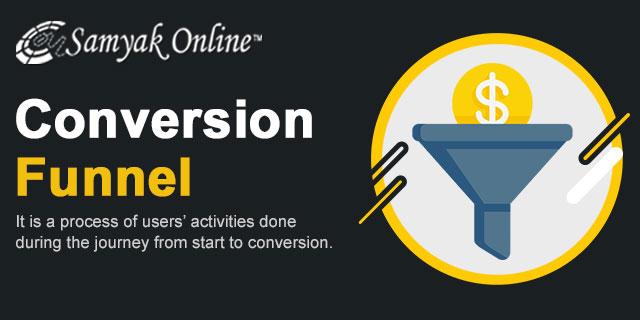
Conversion Optimization
It is a strategy to maximize the percentage of website visitors into customers.
Carousel Ad
It is a paid advertising format having multiple images and videos in one ad.
Display URL
It is the URL placed at the PPC ad. One ad group can have only one display URL having the same domain as the destination URL.
Destination URL
It is the URL of the webpage where the visitor lands after clicking the ad.
Dynamic Keyword Insertion (DKI)
It is a feature offered by Google Ads to support the advertisers to customize an ad for a particular search query. It allows advertisers to insert the best relevant keyword dynamically into the ad copy according to the searcher’s query.
Enhanced Cost-Per-Click (ECPC):
This Google ad feature facilitates automatic bid management of manual bids to increase ROI for ad campaigns. It automatically adjusts the bid for keywords based on their performance.
Expanded Text Ad
This feature allows advertisers to use extra ad text to make it more explanatory and convincing. The advertiser can use two 30-character headings with an option of using a third heading also in addition to two description fields each for 90-characters.
Feature Specific Keywords
These keywords strengthen the ad text messaging by adding additional features driven values like scratch-proof, water-proof, etc.
Geofencing
It is the ad optimization process to target a particular geographic radius by virtual fencing and using GPS for tracking user data. It facilitates advertisers to show their ads to users of a particular locality.
Geotargeting
Also termed as local PPC, this PPC feature lets the advertisers target their ads to appear only to potential customers in the specified location/ locations. It helps to save the cost of clicks that have no or very low potential for conversion.
Google Ads Application Programming Interface (GAAPI)
This advanced feature allows the developers to build applications to simplify the ad campaign management through direct interaction with the Google Ads account.
Hits
This metric represents the number of views of the webpage. The figure includes the number of new and returning visitors. It is a valuable metric to check the CTR of a PPC ad.
Head Terms
These are highly competitive short tail keywords having broad meaning. The bid price for Head Terms is often higher than that of less competitive keywords.
Invalid Clicks
These clicks, also known as ‘fraud clicks’ are rendered through malicious software or automation tools with an intention to harm the ROI of competitors’ Pay Per Click campaign.
Impression Share (IS)
The ratio of the number of impressions against the expected number of impressions is called IS. It is important to assess the success of the PPC campaign.
Interest Categories
Google Ads has a feature in setting that allows its users to target groups of users as per their particular interests.
Key Performance Indicator (KPI)
It is a quantifiable metric that demonstrates the success of an advertising campaign to achieve intended goals.
Keyword Matching Types
It is a Google Ads feature that allows the advertisers to optimize the appearance of advertisement according to the keyword match type; Keyword matching options are related keyword phrases, close keywords phrases, and exact keywords phrases.
Location Extension
It is a Google Ads feature that allows the advertiser to add a business address and contact number at the bottom of PPC ads.
Location Targeting
It is a customizable Google Ads feature that allows advertisers to display their ads in the desired geographic locations.
Manual Tagging
Tagging the destination URLs manually instead of doing it through automated software is called manual tagging. The extended customization of PPC ads for particular keywords is the key benefit of manual tagging.
Message Extensions
This Google Ads feature allows for text messaging to display ads so that potential customers could contact the advertiser quickly.
My Client Center (MCC)
It is a central account that facilitates advertisers to manage multiple Google Ad accounts.
Multivariate Testing
It is a process of testing multiple web page components simultaneously in a live environment.
Negative Placement (Placement Exclusion)
It is a feature of Google Ads that allows an advertiser to prevent the ad display on particular websites.
Opportunities Tab
This Google Ads tool suggests options to maximize the ROI of a PPC campaign by adjusting the budget and high potential keywords.
Pay-Per-Action (PPA) or Pay-Per-Acquisition
Also called Cost-Per-Action, it is the cost you pay to a website each time your advertisement hosted on that site leads a user to make the purchase.
Placement tool
This Google Ad tool helps the advertisers to locate the appropriate targets on the Display Network for ad placement.
Placement Targeting (Managed Placement)
It allows advertisers to choose the websites under Partner Network to display ads.
Promotion Extensions
It is a Google Ad feature that highlights promotional offers and current sales beneath the ads to attract and encourage the target audience.
Qualified Website Traffic
It is a metric to measure the number of visitors interested in the displayed content and offered services/products. These visitors are more likely to become buyers.
Quality Score
A metric gauging the relevance of your ad to the user, comprising CTR, relevance, and landing page quality. Higher quality scores yield superior results.
Return On Ad Spend (ROAS)
It is a ratio that denotes the money gained or lost in comparison to the money invested. It is an important metric to measure the gains of two PPC campaigns.
Search Network
It is the network of websites partnering with Google or owned by Google that display paid ads.
SMB PPC
It is a paid ads digital marketing campaign designed especially for small to mid-sized businesses.
Search Query Report (SQR)
SQR, also called ‘search terms report’, is a report generated by Google Ads to specify the performance of targeted keywords against search queries. A search terms report specifies the search terms that drive the users to click on Google PPC ads.
Shared Budgets
It is an advanced facility provided by Google to optimize the use of the PPC campaign budget for multiple ad campaigns.
Seller Ratings Extensions
It is a Google Ads extension that shows the number of ratings at the bottom of ad text to reflect the trustworthiness of an advertisement.
Sitelinks Extension
Google Ads extension allows promoting additional links (other than a link used in ad text) of the website below the paid ad text.
Split Test (A/B Testing)
It is a test conducted to compare the effectiveness of two versions of the same ad with a slight difference.
Search Engine Marketing (SEM)
It is paid digital marketing, based on paid search advertisements, to increase the visibility of the website.
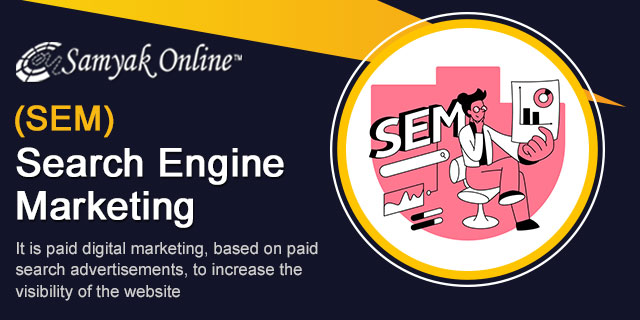
Search Engine Results Page (SERP)
It is a page delivered by search engines responding to a search query. The page contains several relevant website links.
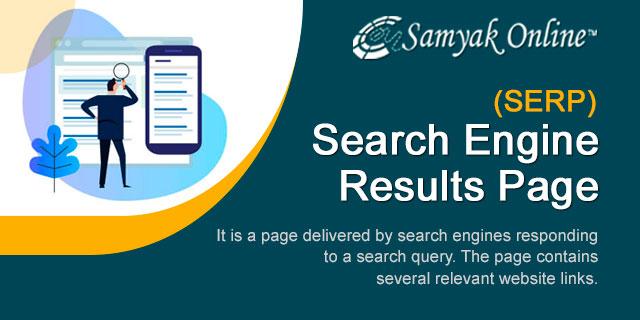
Structured Snippet Extensions
This user-friendly feature of Google Ads allows advertisers to display additional information about specific products/services below the PPC ad text. The information is displayed in the form of a features list and a header.
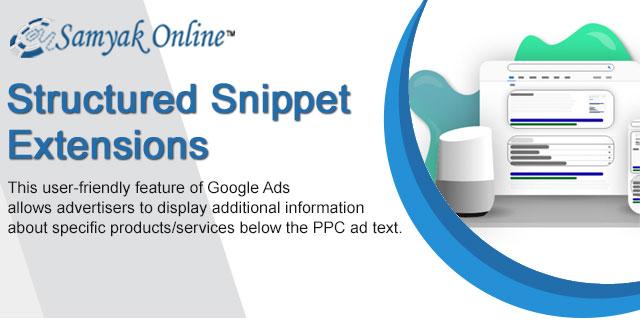
Targeting
It is a method to narrow the SEM campaign to be more focused on a subset of the potential audience.
Traffic Estimator
Free Google Ads tool is used to get predictions about the performance of Google Ads keywords based on ad positions, keywords search volume, and the average bid for keywords.
Tracking Code
It is a JavaScript snippet embedded to track the activities of visitors when they visit the website.
View-Through Conversion
Total number of conversions received by the advertiser within 30 days of Google Ads campaign launch. The figure includes conversions triggered by other means also.
Please keep exploring PPC Glossary / SEM Terminology to keep you updated about the latest additions.
About Author:
Subhash Jain is the Founder of Samyak Online – the top Google Ads Service Provider in India. Are you looking for PPC/Google Ads services to increase your website traffic, leads and conversion? Contact us for Free PPC/SEM Proposal.
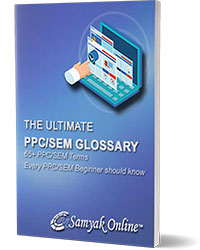
Download Free PPC Glossary eBook – The Ultimate A-Z Guide to PPC Terminology

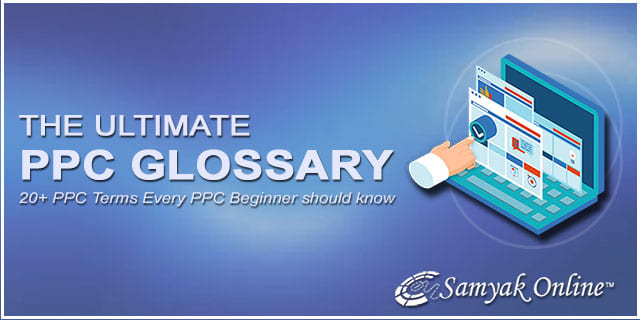
Leave a Reply
Want to join the discussion?Feel free to contribute!